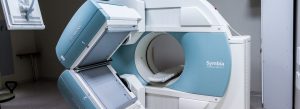![]()
นักวิจัยพบคอมพิวเตอร์ควบคุมเครื่อง MRI และ X-Ray จำนวนมากทั่วโลกถูกติดตั้งมัลแวร์ที่ชื่อว่า Kwampirs ซึ่งเชื่อว่าน่าจะเป็นฝีมือจากลุ่มแฮ็กเกอร์ที่ชื่อ ‘Orageworm’ อย่างไรก็ตามนักวิจัยยังไม่สามารถอธิบายว่าเครื่องเหล่านี้ติดมัลแวร์มาได้อย่างไร
กลุ่มแฮ็กเกอร์ Orangeworm นี้เริ่มปฏิบัติการมาตั้งแต่ปี 2015 โดยเหยื่อกว่า 40% เป็นบริษัทในกลุ่ม Healthcare และที่เหลือ เช่น Logistics, เกษตรกรรม, โรงงาน และบริการทาง IT ซึ่งธุรกิจหลักของบริษัทเหล่านี้เป็น Supplychain ที่ให้บริการกับธุรกิจ Healthcare อีกทีหนึ่ง อย่างไรก็ตามแฮ็กเกอร์กลุ่มนี้มีชื่อเสียงในเรื่องในการมุ่งขโมยข้อมูลของผู้ป่วยจากองค์กรด้าน Healthcare ไปขายต่อ เนื่องจากข้อมูลของผู้ป่วยจากองค์กรเหล่านี้มักจะมีความสมบูรณ์มากกว่าข้อมูลจากสถาบันทางการเงินหรือบริษัทอื่นๆ
จากการศึกษาของนักวิจัยที่ติดตามกลุ่มแฮ็กเกอร์พบว่าที่ปฏิบัติการเช่นนี้เล็ดรอดการตรวจจับได้เพราะองค์กร Healthcare ส่วนใหญ่ใช้คอมพิวเตอร์ที่ล้าสมัย ไม่ค่อยอัปเดต ไม่มีการใช้งาน Antivirus จึงแฮ็กได้ง่าย นอกจากนี้พฤติกรรมของกลุ่มแฮ็กเกอร์เองก็เกิดขึ้นคล้ายกันเสมอคือทำให้คอมพิวเตอร์เครื่องหนึ่งติดมัลแวร์ก่อนและพยายามแบบสุ่มเพื่อแพร่กระจายเครื่องมือที่ทำให้เข้าถึงเครื่องเหยื่อจากระยะไกลที่ชื่อ Kwampirs และค้นหาข้อมูลที่ต้องการต่อไป โดยมีรายงานว่าแฮ็กเกอร์ไม่ได้เปลี่ยนพฤติกรรมการปฏิบัติการเลยตั้งแต่เริ่มการโจมตี
—————————————————————————-
ที่มา : TECHTALK Thai / April 24, 2018
Link : https://www.techtalkthai.com/orageworm-group-attack-mri-and-xray-machine-to-steal-patient-data/














